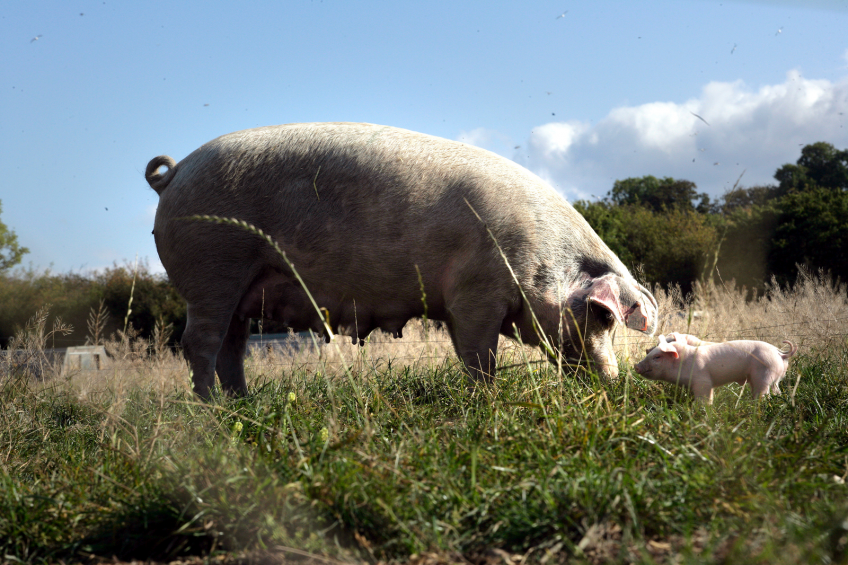Fresh insights confirm role of vitamin D at farrowing

The importance of vitamin D for sows cannot be emphasised enough. Once more its effects were shown in recent trials in France and Germany. The results included fewer stillborn piglets and a higher piglet body weight.
By Antoine Meuter, regional category manager, vitamins, DSM
In earlier editions of Pig Progress, the function of vitamin D have been explained very thoroughly. The effects on producing sows were discussed in two articles, which appeared late 2012 and early 2013. For instance, a relatively new direction of research investigated the role of vitamin D in the expression of more than 200 genes.
Traditionally, however, vitamin D’s effects are most known to calcium and phosphorus metabolism. For sows, this function is important as they need their calcium to keep a good leg bone structure and integrity while milk yield requires large amounts of calcium as well. More about this a little bit later.
Mode of action
It is necessary to take one step back to understand how vitamin D exactly can play all these roles. Vitamin D is usually synthesised from sunshine in the skin; subsequently, it is converted in the liver into a storage form then into a functional form in the kidney. The storage form, also its main circulating type, is called 25-OH vitamin D3, and is also known as calcidiol. The functional form of vitamin D is known as 1,25-(OH)2-D3 – also known as calcitriol.
Since the liver determines how much vitamin D exactly is converted, the above makes it perfectly clear why supplementing extra vitamin D may not be sufficient to help sows and pigs gain a better health.
Supplementing calcidiol directly, however, is what can be beneficial and it is down this road DSM went when developing its product Hy-D, a commercially available version of calcidiol. One gramme can replace 500 IU of vitamin D3 in feed applications. Earlier tests already showed that circulating levels of calcidiol were significantly higher in sows receiving synthetic calcidiol, when compared to sows fed equivalent levels of vitamin D3, throughout the reproductive cycle. This can also be seen in Figure 1.
Recent trials
Two recent DSM trials performed in France and Germany have investigated the effects of feeding 4 g of Rovimix Hy-D 1.25% per tonne/ feed on sow productivity. This was conducted on hyperprolific sows weaning over 30 piglets per year, and was compared with those receiving standard vitamin D3 at 2,000 IU/kg feed over the same period. Each vitamin product was given from gestation to lactation through two consecutive reproductive cycles.
The first obvious result from supplementing the synthetic calcidiol in the diet was that sows produced a lower number of stillborn piglets. A 10% decrease was recorded in the German trial, for example (Figure 2). The effect was even more pronounced in first-parity gilts in the French trial, with a 13% decrease in stillborn piglets.
This reduction may be explained by the fact that calcidiol positively affects calcium and phosphorus homeostasis and improves intestinal calcium absorption. This acts to make calcium more available and helps prevent parturition problems linked to calcium metabolism, such as a difficult and slow farrowing process. Indeed, the correlation between too low blood calcium levels, decreased muscle tone and increased still births is well known.
Both studies additionally found that feeding calcidiol to sows throughout gestation and lactation resulted in increased calcium levels in blood compared to the sows fed with standard vitamin D3. The evolution of calcium plasma concentration around farrowing was also positively impacted. In the French trial, for example, the evolution of this parameter was about +0.51 mg/dl for the calcidiol group and +0.31 mg/dl for the control (Figure 3).
This positive effect on the farrowing process was confirmed by observations done at sows’ level around parturition. For example, calcidiol supplementation resulted in reduced need for human assistance and farrowing interventions, such as artificial stimulation of uterine contractions. There was also a significant reduction of farrowing complications like fever and palpations of birth canal (Figure 4). Calcium is also essential for lactation efficiency and a smooth start-up of milk production post-partum. Again, sows given calcidiol performed better in this regard, with litters in both trials heavier at weaning and recording significant improvements in piglet body weight (Figure 5).
The results of these recent experimental trials provide further evidence on the role of calcidiol in increasing sow productivity during farrowing and into the weaning stage, due to its direct effect on improved calcium absorption. The calcium balance is even more important in hyperprolific sows, as they need an improved farrowing process as well as a sustainable milk yield for litter viability and optimum piglet growth.











